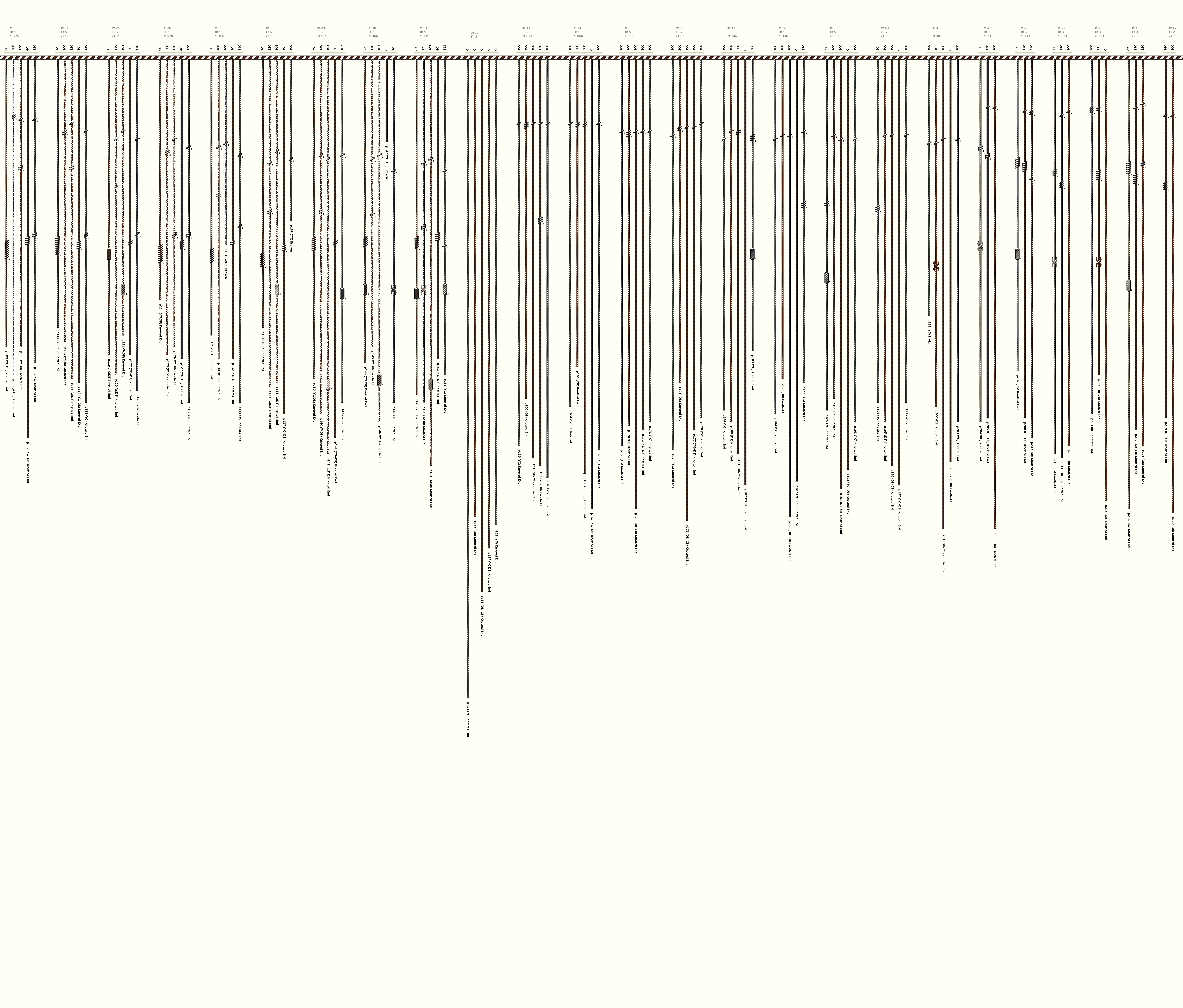UR1109/KH0123
|
Original Name: AS109 Original Author: Marcia & Robert Ascher Museum: Museum für Völkerkunde, Berlin, Germany Museum Number: VA47069 Provenance: Unknown Region: Ica |
Total Number of Cords: 287 Number of Ascher Cord Colors: 11 Similar Khipu: Previous (UR1107) Next (UR1179) Catalog: UR1109 Khipu Notes: Khipu Notes |
Use ⌘ + or ⌘ – to Zoom In or Out








Khipu Notes
Ascher Databook Notes:
- This is one of several khipus acquired by the Museum in 1907 with provenance Ica. For a list of them, see UR1100.
- By spacing, the khipu is separated into 69 groups of 1-5 pendants each. By color patterning, the khipu is separable into 7 parts with 10, 11, 10, 10, 10, 8, and 10 groups respectively.
- In part 1, with the exception of 2 pendants in the 10th group, each group has the 5 color pattern: YB, DB, DB-CB, DB-YG, YG. Where there are only 4 pendants in a group, it is the last position that is non-existent. The color pattern for part 2 is the same as for part 1 except that in the 4th position, the color is DB:YB instead of DB-YG. All groups in part 3 have the pattern: DB:YG, DB:W, DB:W, DB-YG, YG. Part 4 has the same color pattern as part 1. (Of these 10 groups, the only exception to the pattern is the 4th pendant in the first group.) Part 5 is 5 groups of 3 pendants each and then 5 groups of 2 pendants each. The 3 color pattern is RG, DB-CB, DB and where there are 2 pendants, it is always the first position that is non-existent. Part 6 has the 5 color pattern of parts 1 and 4. Seven of its 8 groups have only 4 pendants each and it is always the 4th position that is non-existent. The 10 groups of part 7 have 3, 2, or 1 pendants each. Where there are 3 pendants, they are positions 2-4 of the 5 color pattern shared by parts 1, 4, and 6 (the 4th group has 1 color out of order); the 2 pendant groups are positions 2-3 of the 5 color pattern; and the single pendant is the color of position 2.
-
- In part 1, all pendants in the first group are zero-valued (or blank). Similarly, in parts 2 and 4, the first group is all zeroes (or blanks). In part 2, the last group also is all zeroes (or blanks).
- Some groups in the same part have the same values in corresponding positions. In part 1, group 2 = group 3 and group 6 = group 7; in part 2, group 3 = group 6 = group 9; in part 3, group 2 = group 3 = group 5; in part 6, group 6 = group 7; and in part 7, groups 1-7 are all equal to each other.
- When color patterns are aligned, the sums of values, position by position are similar for different parts. (We assume that the broken pendants Pl31, P138, P147, and P199 have values 103, 120, 30, and 100 respectively. These values are in keeping with the values in similar positions in neighboring groups.) Table 1 shows the sum of the values of all groups in each part, position by position.
TABLE 1
Part Position 1 Position 2 Position 3 Position 4 Position 5 Part 1 (groups 1-10) 7 66 1572 1120 Part 2 (groups 1-21) 755 1501 1100 330 Part 3 (groups 22-31) 755 1501 1100 330 Part 4 (groups 32-41) 755 1501 1100 330 Part 5 (groups 42-51) 467
(note 467+533 below=1000)1501 1100 -- Part 6 (groups 52-59) 533 1200 1052 112 Part 7 (groups 60-69) -- 1514 0 0